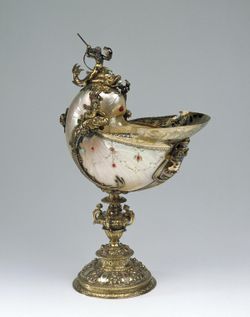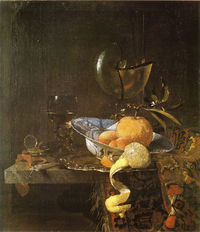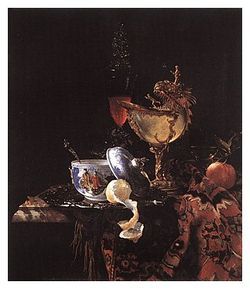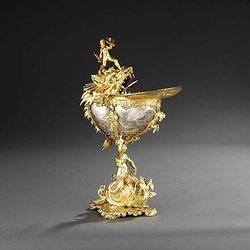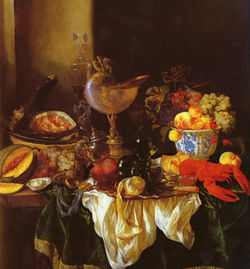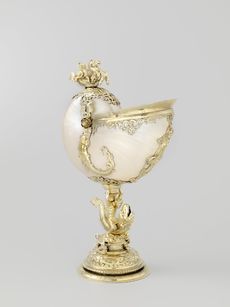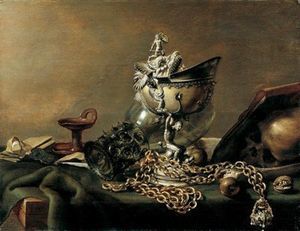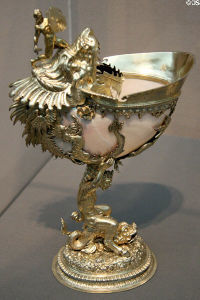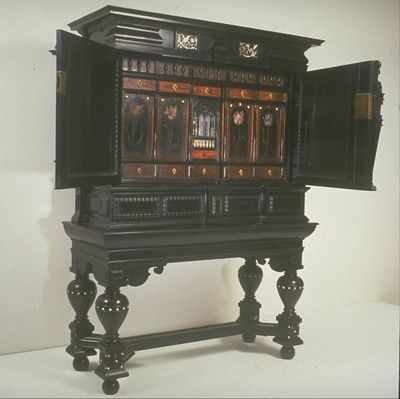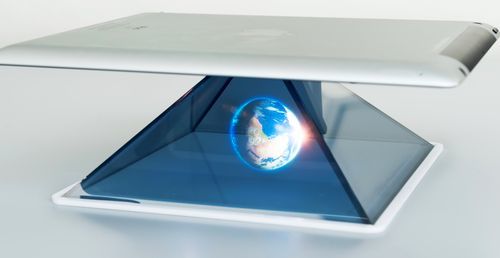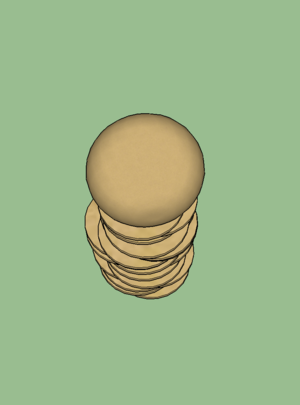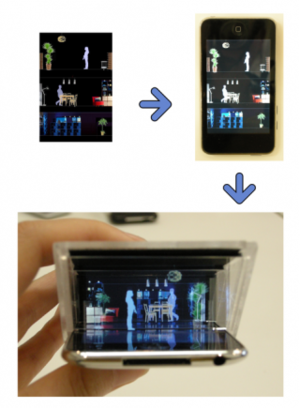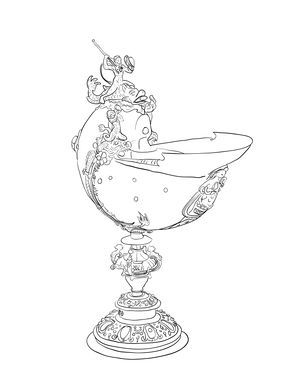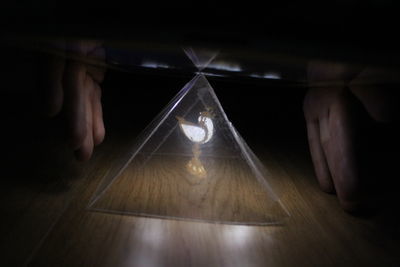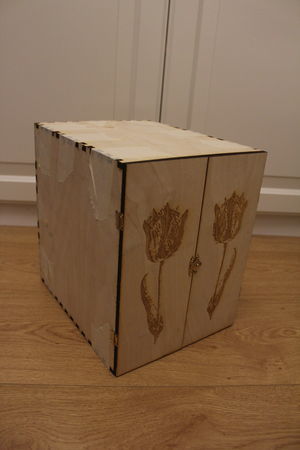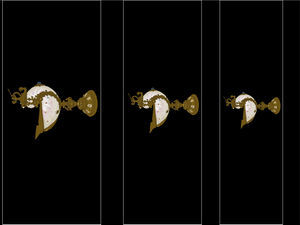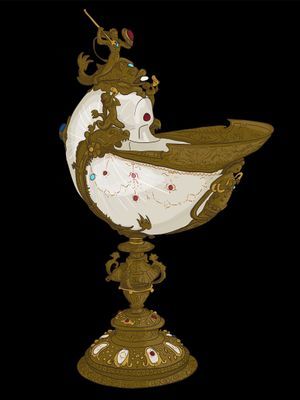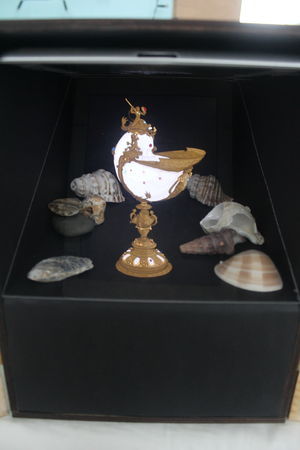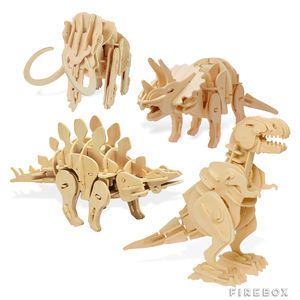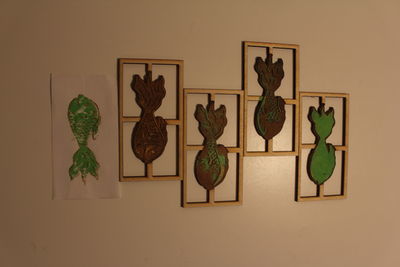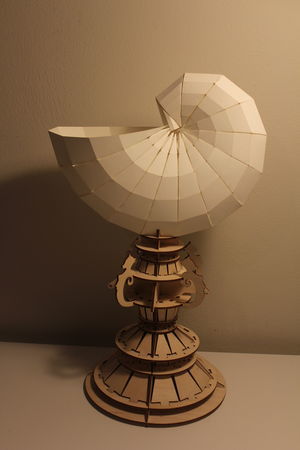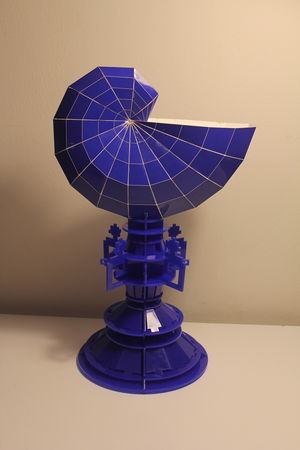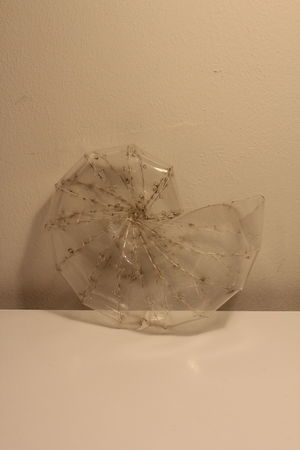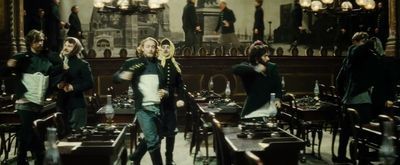Difference between revisions of "User:N.Everts"
| Line 113: | Line 113: | ||
Another contemporary production designer I find very inspiring is Sarah Greenwood. She came up with the set for Joe Wrights Anna Karenina (2012). This is, just like Méliès work, a very dynamic stage, that is constantly changing. Though other then Méliès work, were the camera would be stop to make the changes and started again so that it would look like things would happen out of nowhere, Greenwoods work changes whilst the camera is still rolling. There is this one scene were a room filled decks turns into a cheque corner of a dining room while the camera is following the actors and everything is shot in one take even though it takes quite a while for everything to changes from the one scene into the other. It also has a bit of a theatrical feel to it, which I also find a very strong asset to the scene. | Another contemporary production designer I find very inspiring is Sarah Greenwood. She came up with the set for Joe Wrights Anna Karenina (2012). This is, just like Méliès work, a very dynamic stage, that is constantly changing. Though other then Méliès work, were the camera would be stop to make the changes and started again so that it would look like things would happen out of nowhere, Greenwoods work changes whilst the camera is still rolling. There is this one scene were a room filled decks turns into a cheque corner of a dining room while the camera is following the actors and everything is shot in one take even though it takes quite a while for everything to changes from the one scene into the other. It also has a bit of a theatrical feel to it, which I also find a very strong asset to the scene. | ||
| − | [[File:A1.jpg| | + | [[File:A1.jpg|400px]] |
| − | [[File:A2.jpg| | + | [[File:A2.jpg|400px]] |
For my own work I find that atmospheres and vibes play an imported roll. And I believe that the power to really get a scene right lies within the colour, details and the things that actually most of the time goes unseen by the spectators. This is where the key lays to really creating the right “sfeer”. Brendan Dawes has created Cinema Rex in 2004 in which he as put all the frames of a movie next to each other and in this way creates a visual fingerprint of an entire movie. In this work you can also see the colour spectrum of a movie. Some seem bit browner tinted, others look a bit bluer. While just watching the movie as its self you might not really realise this, but when everything put together like this, it is much easier to notice it. In one glance you might even get a sense of the feel of the movie. [http://brendandawes.com/projects/cinemaredux| Brendan Dawes] | For my own work I find that atmospheres and vibes play an imported roll. And I believe that the power to really get a scene right lies within the colour, details and the things that actually most of the time goes unseen by the spectators. This is where the key lays to really creating the right “sfeer”. Brendan Dawes has created Cinema Rex in 2004 in which he as put all the frames of a movie next to each other and in this way creates a visual fingerprint of an entire movie. In this work you can also see the colour spectrum of a movie. Some seem bit browner tinted, others look a bit bluer. While just watching the movie as its self you might not really realise this, but when everything put together like this, it is much easier to notice it. In one glance you might even get a sense of the feel of the movie. [http://brendandawes.com/projects/cinemaredux| Brendan Dawes] | ||
Revision as of 18:47, 14 October 2014
Contents
Workshop
Project 1
As inspiration for my first project I took the nautilus beaker. It is made of nautilus shell, silver, gilting, mother-of-pearl and precious stones. I chose it because of the details. The use of natural materials and metals is rather intriguing, especially considering the era it's made in. It really looks like a prop from a fantasy movie of something along those lines.
Reseach
Beaker and Paintings
This beaker isn't the only one in existence though. There are quite a few others dating from the same era. The cups most likely originated from The Netherlands as most of them have the signs of either Rotterdam or Amsterdam or Delft on them. Though there are also a few pieces with marks from German. They are seen as pieces of art rather then just object because of their architectural earth. Een Hollandse Nautilusbeker, Th. M. Duyvené de Wit-Klinkhamer Another thing that is quite interesting is the fact that the beakers appear in a few still life paintings dating from the renaissance. Most of them painted by Dutch painters, like for example Abraham van Beyeren and Willem Kalf. Though the paintings look a lot like the really cups but they are not completely identical.
A painting by Pieter Claesz is the only painting with which I was able to find a beaker that was almost completely identical though still isn’t a 100% the same.
Cabinets of Curiosities
Nautilus cups were (and continue to be) among the most prestigious trophy objects within silver collections, and as such they were frequently represented in still life paintings, such as those by Willem Claesz. Heda (Dutch, 1594 – c. 1670). But they are particularly representative of the objects collected in the Renaissance ‘cabinets ofcuriosities,’ a type of collection, which is an important forerunner of the modern museum as an institution. Striving to put together the rarest and most exotic, wondrous products of nature with the most astonishing accomplishments of human inventiveness and dexterity, that is of naturalia and artificialia as they were called at the time, princes and the richest merchants of the 16th and 17th centuries put together the first large collections of zoological, botanical, and mineralogical specimens blended with the most exquisite works of art. These “cabinets of curiosities” were also known as Kunst- und Wunderkammern (“chambers of art and wonder”). They first emerged in the territory of the Holy Roman Empire and in central Europe, before spreading throughout the remainder of the continent. By combining natura and artificium in a single work, Nautilus cups can be seen as pars pro toto embodiments of the very concept of collecting that informed the “cabinets of curiosities” at large. Artsjournal
Inspiration
HOLHO
This is a device that lets you create holograms using a phone or tablet. The hologram is created by the 4 sides that reflected image, creating the illusion that the projected image is inside of the device. HOLHO
i3DG by Jitsuro Mase
i3DG is a playful analog extension to an iPhone or an iPodTouch, converting its 2D display into a layered 3D view. Using the old technique of placing a half-silvered mirror at a 45-degree angle in front of an image, in a new context, the project extends upon 3D displays and iPhones. As a peripheral gadget, i3DG can support a wide range of different applications, from 3D videos and animations to accelerometer-based games. i3DG
Replica with different technique / material
Modern illustration of the nautilus beaker, using Illustration and Wacom (in progress)
I wanted to created a hologram using illustratons form all 4 sides of the object.
Though I had trouble with the light presenting my project during daytime. So I thought of a way to still be have the hologram clearly visible despite the amount of light in the room. I recreated a modern version of the cabinet of curiosities in which I could present the hologram.
I tried to create more depth by using the i3DG technic but the images came out to small and barely visible to I decides just to use 1 layer.
In the end my replica became a sort of collaboration between the usual representation of a nautilus beaker in the renaissance, either resented in a cabinet of curiosities of captured in a still life painting. My replica is a modern captured images placed in its cabinet, which are both made with modern technologies.
Though it still didn’t have enough depth so I tried creating depth by putting stuff inside the box and animating the image, but nothing really created the effect that I wanted. Then I thought of the image itself and how it is build up out of layers, and maybe I could do something with that. I could take all the layers apart and make stamps of them, so that you could easily recreate the image again. I made a little test, but I didn’t turn out the way I thought it would. I had to go a step further. So I decided to completely let go of my previous idea and started thinking in a different way. I had to create something in 3d. That’s how I came up with the idea off the “puzzle”. As an inspiration I had those dinosaurs that you could have as a child, which you could push out of a flat piece of wood or cardboard and build up into a 3 dimensional dinosaur. So I decided to build my own model like that. I also came up with a model to create the shell from just a flat piece of paper. And for my interpretation I went on with the replica I had and created another version that had a complete different look and sensation to it. For the last one I wanted to make a transparent version using the outline from the previous version as a mould to pour resin in. In the end I decided that the mould would work better as a whole piece and as a blueprint of the work I created.
Insperation
Hermit Crab Shell by Aki Inomata
The idea I came up with was inspired by a work I had seen recently by the Japanese artist Aki Inomata. For this work she 3D printed shells for hermit crabs using a clear plastic. She decorated the tops of the shells with architectural sceneries inspired by places all over the world. Aki Inomata
Written Assignment
I am a visual artist. I create stories, impressions, sceneries, feelings, and emotions using audio and visual media. I have learned about the technical and the conceptual aspects of this craft. Though the thing with audio-visual work is that most of the time there are different disciplines in creating the pieces, practiced by different people with their experience of this particular discipline. In my time here at school I’ve work in a few of these disciplines; camera, sound, editing, colour grading, scenario, but I’ve experiences that I like working in the visualising of a concept the most, in a matter of art department. I like to create the right atmosphere and sensation for the story that’s been told. This is also the discipline I want to develop myself further in.
As a visual artist there are quite a few different tools and media that come along with it. You need lamps, cameras, lenses, filters, microphones, recorders, but also the software to put your material together and fine-tune them. There are also a lot of different media in which the video’s can be shown; think of cinemas, the internet, smartphones or just any television at home. However these tools and media are always developing. Video gets high resolutions and editing programs become more convenient. Also the media broadens and social media starts to play an important part in presenting and promoting your work. And as visual artist you have to adapt to these changes and new ways in order to pursue you’re work and keep it “up to date”. Unless you actually choose to work with or in old ways, like with analogue film for example. If it is from importance to your video, to create a certain feel or vibe to your film or for some astatic reason, it might be better to go with the old ways instead of all the new innovations.
However the art department is also gone though some chances. Back in the days film sets would just physically be build and the actors would be set into the décor. Now a days it sometimes works in a different way. Actors will act in front of a green screen and later on in the process the sets will be digitally built around them. This however does have some effect on the task of the production designer. There is no need to go out and get all the stuff to build the whole set anymore; cause a computer has replaced it. Although this doesn’t mean that the production designer is no longer needed, cause there is still a set that needs to be created. Even so it might even mean that it makes the production designers task more difficult, as for everything has to be created from scratch.
There are a lot of different ways to work as a production designer. You’ve got just the basic decorations of rooms or the creation of a fantastical landscape. But there also little tricks in which the set starts to play an active roll in de story. A very good example for instance is the work of Georges Méliès. He was one of the first filmmakers who manipulated his films with little tricks, like stop motion for example. His set played a very important part in creating these illusions. Things would disappear or reappear and the actors collaborated with their surroundings. I think that is a very clever and innovative way of making sets. Another contemporary production designer I find very inspiring is Sarah Greenwood. She came up with the set for Joe Wrights Anna Karenina (2012). This is, just like Méliès work, a very dynamic stage, that is constantly changing. Though other then Méliès work, were the camera would be stop to make the changes and started again so that it would look like things would happen out of nowhere, Greenwoods work changes whilst the camera is still rolling. There is this one scene were a room filled decks turns into a cheque corner of a dining room while the camera is following the actors and everything is shot in one take even though it takes quite a while for everything to changes from the one scene into the other. It also has a bit of a theatrical feel to it, which I also find a very strong asset to the scene.
For my own work I find that atmospheres and vibes play an imported roll. And I believe that the power to really get a scene right lies within the colour, details and the things that actually most of the time goes unseen by the spectators. This is where the key lays to really creating the right “sfeer”. Brendan Dawes has created Cinema Rex in 2004 in which he as put all the frames of a movie next to each other and in this way creates a visual fingerprint of an entire movie. In this work you can also see the colour spectrum of a movie. Some seem bit browner tinted, others look a bit bluer. While just watching the movie as its self you might not really realise this, but when everything put together like this, it is much easier to notice it. In one glance you might even get a sense of the feel of the movie. Brendan Dawes
I am still trying to find my own signature in creating set, atmospheres, ambient and ways of telling a story with visuals, but I’m hoping that with this minor I will also find a new and unique way to accomplice this. To find a balance between the new innovations and the classic ways of achieving a set that would tell you the story even without the story of the movie itself.
